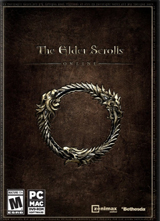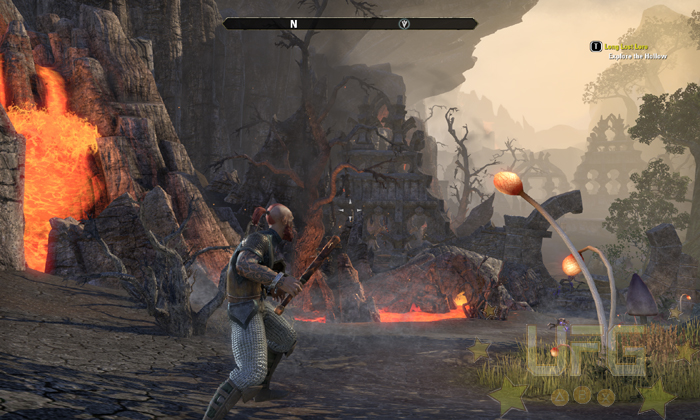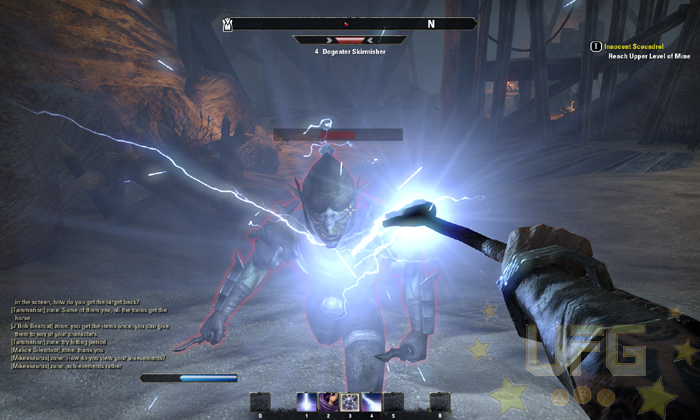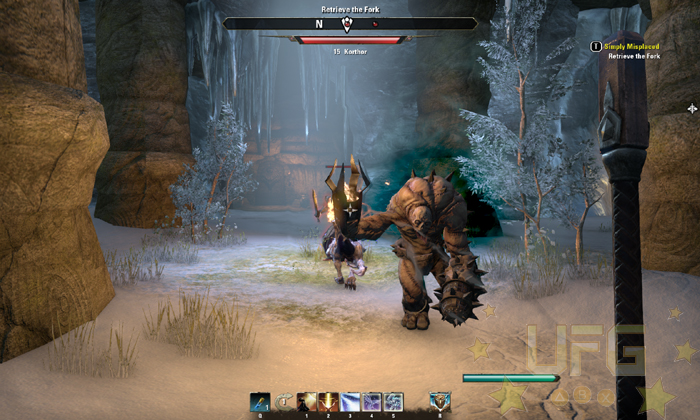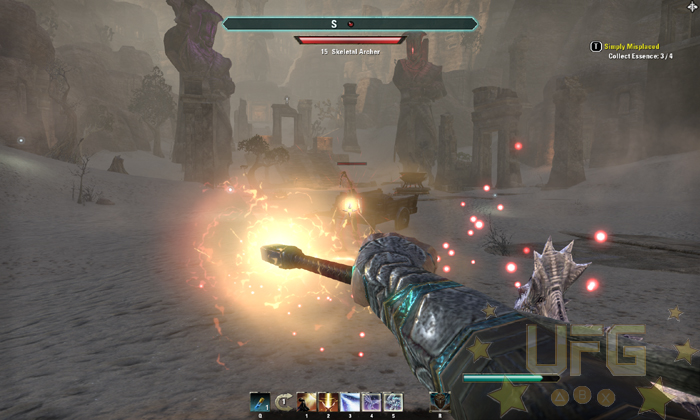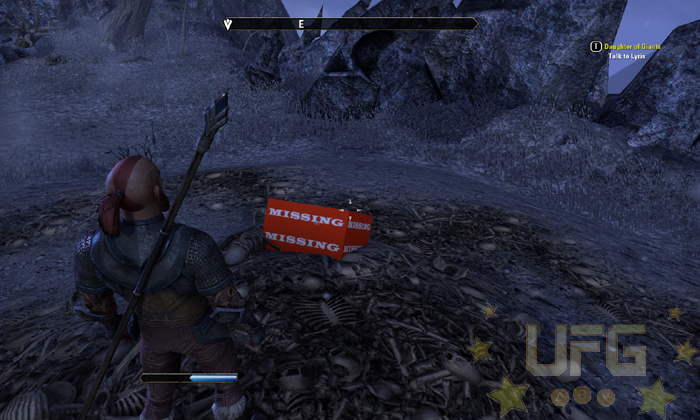The Elder Scrolls Online Review Part 1
Massively Multiplayer Online Role Playing Games (MMORPG’s or MMO’s) have to be one of the most difficult genres in video games to develop for. Whether it’s the demand for continuous updates and expansions or the subscription-based pricing model, MMO’s are stressful endeavors. So every time I hear that a developer is trying their hand at making the next big thing in this genre, I’m always a bit skeptical. Not so much on the game being great, but on how long the developer will be around after launching their MMO. Basically, ZeniMax Online is fighting an uphill battle with The Elder Scrolls Online!
The idea of paying monthly for a game like this has become taboo over the years. It didn’t take long for popular MMO’s like Rift, DC Universe Online and Star Wars: The Old Republic, to go Free-to-Play. Guild Wars 2 has been doing extremely well without needing subscribers. Heck, even World of Warcraft, the long-lasting behemoth of a game with millions of subscribers, has offered the ability to play for free up to level 20. Does Elder Scrolls have what it takes to keep gamers engaged well enough to warrant the subscription? What does it bring to the table that other MMO’s couldn’t? Well, that’s what I’m here to find out!
Before going further into the review, I would like to point out that I’ve previewed TESO back in February. In doing so, I covered a lot of the basic gameplay (up to level 15). I’ll do my best not to retread old news here. Meaning, that my preview and review should be read together to help one decide if this is a game for them.
One thing that could help is its lore (though that was what BioWare thought about Star Wars). For those that don’t know, each Elder Scrolls game is set in the same world, just at different time periods. So as you play each one, you learn more and more about the events that led up to whatever title you’re currently playing. What’s great about this is that there’s a sense of belonging when playing – you may be in a new place, but your actions are grounded in the same reality as previous titles. Not only that but each major event is interesting in its own way. I personally feel that the world’s history is so fascinating that even newcomers to the series will find themselves getting wrapped up in the events at hand. The same thing goes with TESO.
This particular game is set in Tamriel, a continent on Nirn, 800 years before the events of Elder Scrolls III. Molag Bal, the Daedric Prince of Domination is trying to merge the plane of Oblivion (his current dwelling place) with that of Nirn. His followers were able to trick a noble into breaking a secret convenient, weakening the barriers between these two places. Because of this, Dark Anchors rain down from vortexes in the sky, allowing Daedric soldiers and other monstrosities to enter Nirn unchecked. In response the inhabitants of Tamriel formed three different alliances/factions – not willing to work together as a single unit – to combat this menace.
For my review I decided to again join the Daggerfall Covenant in order to see what changes, if any, were made between beta and now. I did choose a different race and class though. My character became a Breton Sorcerer – humans that share Elven blood, allowing for a decent understanding of magic. Interesting enough, there wasn’t much difference when compared to playing as an Orc. Sure the basic race and class skills were different. Outside of that, at least early on, things were the same though. I could use any weapon I wanted and I wasn’t a weakling (most mage-like characters can’t take damage well). It’s possible that an Orc Sorcerer would have played just like my Breton.
What made my Breton stand out from the Orc I used in the beta was my play style. I decided to use wands and not melee weapons while also upgrading my magicka (manna to use magic) pool over stamina. Of course, in order to be effective as a Sorcerer you’d have to utilize magic but the game didn’t start me out with more than other characters. It was really up to me to shape my character’s role. I believe this is due to the how TESO was set up; to be played like a single player Elder Scrolls game but with multiple players. That’s the feel I got in beta and it hasn’t changed.
The personal shaping of characters extends to how they level up and the quests themselves (more on that later). The normal leveling gained from experience is used to unlock new skills and to build basic stats in magicka, health or stamina. However, individual skills are upgraded by their use. Using an ability will, over time, make it stronger. Making the skill stronger will in turn raise the level of the entire skill tree, opening up newer skills to use. For instance, one of the Sorcerer’s skill trees is Dark Magic. Using the Encase spell to trap enemies will increase its usefulness as well as level up the Dark Magic skill tree. Once a certain level is reached, more advanced Dark Magic spells become available. Using the skill points that I gain from leveling up my character, I can then unlock these spells for my character to use. The skills aren’t limited to the ones granted by your class and race either. Everything from your weapon type to body armor has its own active and passive skills that you can level, shaping your generic character into something more individual.
Even though my character specialized in a lot of ranged skills, I still used the melee fighting mechanics mentioned in my preview. Enemies would often run up to me in preparation of dealing out strong attacks. To combat this, I’d dizzy them by blocking with my staff and retaliate with my own strong attack. This would knock them to the ground allowing me time to cast magic spells with ease. Just like before, the fighting is strategic in nature – much more fun than just cycling through hotkeys. This holds especially true for boss fights, as many of them have devastating moves that need to be blocked or dodged if one hopes to survive.
Speaking of survival, there will come a time when you bite off more than you can chew resulting in a quick death. Or maybe that was just me; I dig a challenge! Regardless, death is almost certain. That said, as long as you aren’t dying a lot, the sting isn’t too bad. What happens is that your gear will deteriorate a little with each death. With enough wear and tear, your gear will lose its strength; your weapons won’t hit as hard, your armor won’t protect you as well, etc. The only way to fix your items is by using a repair kit or visiting a vendor. Because of this, most gamers will have second thoughts about trying to take down a tough boss after a few deaths. Once dead, you’ll have two choices of resurrecting yourself sans the help of another player. If you have the appropriate Soul Gem, you can use it to resurrect yourself right there. If not, you’ll be sent to the nearest found wayshrine (or the beginning of a dungeon). This adds a second factor to think about. Having to run through previously vanquished enemies with lower stats just to get back to where you left off is a pain.
Now that I explained all of that, let’s get back to the quests. I really like how most of the quests are related to the main story. On the surface they may not be any different from the quests MMO fans have been doing for years. At the same time there is more meaning behind what you’re doing; the game will make sure you understand how a side quest links to the main plot. So much so that you feel like the whole game is focused on this merge with Oblivion. There are, however, some more mundane quests. That said, they don’t distract from the main theme as everyone involved is aware of what’s going on; a fetch quest may be a means to gather supplies to later overthrow a corrupt official working for Molag Bal.
TESO’s world is shaped by your actions. NPC’s will remember your good deeds, environments will change to reflect a hard fought battle – even the map will change the description of places when scrolled over them. A treacherous island turns into the “island where you saved a noble’s family from bandits”. Again, it’s a personal/single player adventure with multiple players. While this is certainly cool, it’s also concerning. Grouping with others can seem odd as the game doesn’t take them into account – like your companions aren’t really participating in the ongoing conflict, at least not from your point of view. This wouldn’t be a problem for a normal MMO as things don’t really change outside of major events. In Elder Scrolls though, every little action can change the environment around you. When in a group of players who have completed different quests, this presents an obstacle. For one, the game will phase you in and out of an “instance” of a location after completing certain quests. You’ve killed all of the bandits in this area and because that affected the story, it becomes a safe haven for travelers. That’s not the case with other players (who haven’t completed that particular quest). They’ll still have to deal with the bandits there. This doesn’t make for a very strong feeling of camaraderie while playing with others, essentially you and your allies are not experiencing the same interactions.
The overall feeling of being a “lone hero surrounded by random, lessor heroes” isn’t too bad. And it is possible to quest with friends and feel unified; you’ve completed the same quests and made the same choices, allowing for the world’s changes to coincide with one another. Something to note though is how the phasing seemed to cause a glitch based on the number of people in a given area. Similar to the missing quest objects mentioned in my preview, once a certain number of players completed an objective, it would phase out and would presumably never come back. Players would be standing in a group, waiting for an NPC or important item to return but they never would. The only fix was to sign out and then back in in hopes of being loaded into a different phase. Frustrating is an understatement when explaining how I felt while experiencing this. That said, I haven’t seen the glitch happen much, as of late. And to be fair it’s extremely common from MMO’s to have issues early on. Aside from one nasty glitch involving people’s accounts, most of them weren’t that bad and were fixed pretty quickly.
So far I’ve enjoyed my time with TESO. Outside of a few gripes it has been a great experience. I know that I left out a lot in my coverage of the game here; there is just too much content to give it a final score right now. I haven’t even reached the end game content yet. Basically, I plan on adding more parts to this review to give you a bigger picture of what to expect. That includes the dungeons, over world events like Dark Anchors, PvP options and more. One thing I can say for certain is that it doesn’t reinvent the MMO wheel. And as fresh as it may feel, fans of this genre won’t be sold just because it’s an Elder Scrolls game. Is it worth the monthly fee…I honestly don’t know. We’ll have to wait and see what the end game holds!
